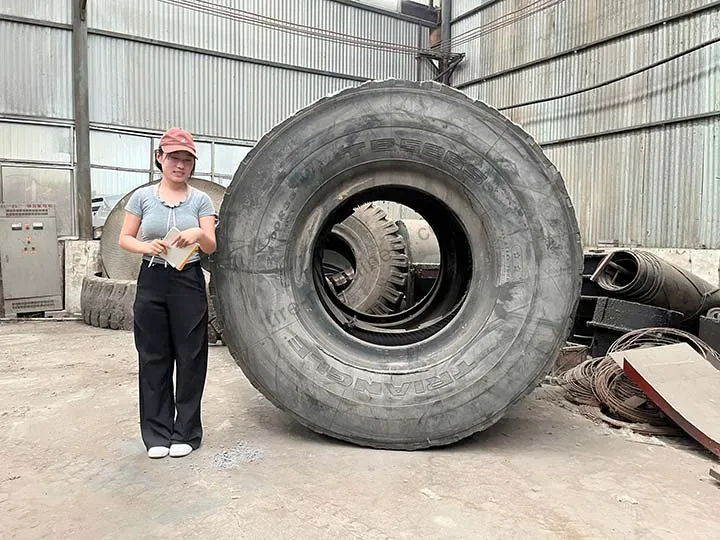A Guide to Starting a Profitable Tyre Recycling Business in Australia
This article provides a comprehensive guide for entrepreneurs looking to start a tyre recycling business in Australia. It covers the local market opportunities, including the high demand for crumb rubber in infrastructure and the significant OTR tyre challenge in the mining sector. The guide walks through creating a business plan, selecting the right equipment—comparing semi and fully-automatic lines—and highlights key considerations for finding a reliable international supplier.

Every year, Australia generates tens of millions of end-of-life tyres. For decades, this has been viewed as a waste management problem. Today, it represents one of the country’s most significant circular economy opportunities. Starting a tyre recycling business in Australia is no longer just an environmental venture; it’s a strategic move into a market with growing demand for sustainable materials.
This guide provides a comprehensive roadmap for navigating the Australian market, from understanding the unique opportunities to selecting the right equipment for success.
Understanding the Australian Market: Opportunities and Regulations
Australia’s commitment to sustainability is creating a fertile ground for the recycling industry. The crumb rubber market in Australia is driven by both government initiatives and industrial demand.
Market Opportunities:
Infrastructure Projects: Australian state governments are increasingly mandating the use of recycled materials in road construction. This creates a stable, high-volume demand for rubberized asphalt, which improves road longevity and safety.
Sports and Recreation: From local playgrounds to professional sports fields, the demand for sports turf infill and soft-fall surfaces made from recycled rubber is strong.
The OTR Tyre Challenge: This is a uniquely Australian opportunity. The massive mining operations, particularly in Western Australia, generate a huge volume of giant Off-the-Road (OTR) tyres. Specialized OTR tyre recycling is a high-value niche market with fewer competitors.
Key Regulations:
Operating in this sector requires adherence to strict environmental regulations. Each state has its own Environmental Protection Authority (EPA) that governs waste processing licenses and operational standards. Choosing compliant, high-efficiency equipment is the first step to meeting these requirements.
Your Tyre Recycling Business Plan: A Blueprint for Success
A detailed tyre recycling business plan is your most critical tool. It should outline your strategy for sourcing materials, defining your products, and analyzing your financials.
- Sourcing Raw Materials: Establish a collection network with tyre retailers, fleet operators, and mining companies.
- Financial Analysis: Your plan must include a realistic breakdown of startup costs, including equipment, site setup, and licensing. A key focus should be the projected tyre recycling ROI, which is heavily influenced by your operational cost and the market value of your end products (crumb rubber and steel).
Equipment Selection: Choosing the Right Tyre Recycling Plant for Australia
A tyre recyling line is the most significant investment you will make. The right equipment selection for tyre recycling will determine your production efficiency and long-term profitability.
Semi-Automatic vs. Fully-Automatic Lines
- Semi-Automatic tyre recycling Line: Offers a lower initial tyre recycling plant cost in Australia. It is a good starting point for businesses with limited capital or those planning a phased expansion.
- Fully-Automatic tyre recycling Line: While the initial investment is higher, it significantly reduces long-term labour costs—a critical consideration in the Australian market. It’s the preferred choice for large-scale, high-efficiency operations.
Special Considerations for the Australian Market
- OTR Capability: Given the huge mining sector, having equipment capable of processing heavy and oversized OTR tyres is a major competitive advantage.
- Electrical Standards: Ensure your supplier can configure all machinery to Australian electrical standards (230V/400V, 50Hz).
Choosing the right partner who understands these local nuances is crucial. We offer a range of customized tyre recycling solutions for the Australian market, from small-scale startups to heavy-duty OTR processing plants.
Finding a Reliable Supplier: More Than Just the Cost
When searching for equipment, it’s easy to focus solely on the initial tyre shredder price in Australia. However, a reliable tyre recycling machine manufacturer offers more than just a competitive price.
Look for a tyre recycling machine manufacturer with:
- Durability: Look for machines built with high-quality materials, like hardened alloy rollers, that can withstand the demanding nature of tyre recycling.
- Energy Efficiency: Modern, energy-efficient designs can drastically lower your long-term operational costs.
- Logistical Experience: A good supplier will have proven experience shipping heavy machinery to major Australian ports like Sydney, Melbourne, or Fremantle.
The opportunity to build a successful and sustainable tyre recycling business in Australia is clear. The key lies in thorough planning, understanding the unique local market, and partnering with a technology supplier who can provide reliable, efficient, and appropriate solutions.
Ready to turn Australia’s tyre problem into your business opportunity?
Contact our specialists today for a customized quote and a detailed equipment proposal tailored tothe Australian market.
